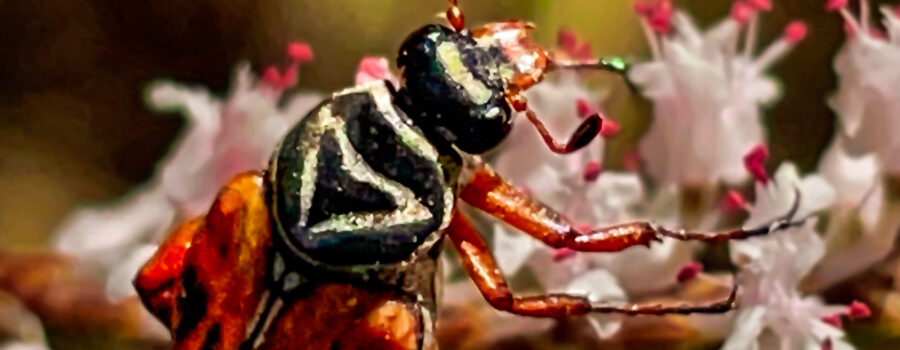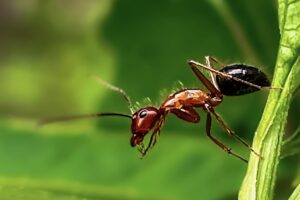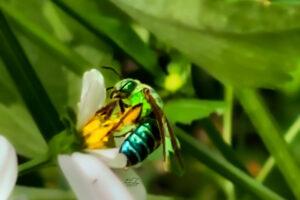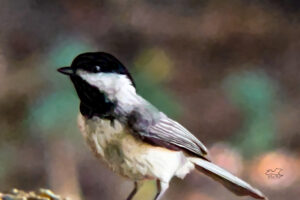The Colorful Delta Flower Scarab Beetle Lives for Beautiful Flowers

Oftentimes when I head out on a nature hike I have no idea what I will find or see and that was definitely the case when I stopped at the Bailey Trails section of Gothe State Forest. I stopped to photograph the tamarisk flowers and ended up finding a bunch of other cool things as well, such as the fine-backed red paper wasp. Another colorful insect that was enjoying the tamarisks was a beautiful delta flower scarab beetle or D beetle (Trigonopeltastes delta). The name comes from the brightly colored triangular marking on the back of the thorax or pronotum. The triangle, or delta, is just part of this beetle’s orange, yellow, and black color pattern. It’s believed that this color pattern mimics that of many types of wasps and helps to warn away predators. The delta flower scarab is one of two flower scarabs that we have here in Florida, but the other species, Trigonopeltastes floridana, is very rare. It looks a lot like the delta flower scarab beetle, but has a U or V shaped marking instead of the delta on the pronotum.

As adults, flower scarab beetles spend almost all of their time on flowers. They can be found on a large variety of flowers including hibiscus, roses, sumac, mango, crotalaria, groundsel, Brazilian pepper, morning glories, and blackjack to mention just a few. This makes them among some of the best pollinators for some of these species. These beetles can be found from eastern Texas and Kansas to Florida and as far north as southern New Jersey. They are usually in their adult form from May through August or September. Down here in Florida they tend to last a little longer, as evidenced by the fact that I found this one in October.

Like other scarab beetles, these guys live about a year and go through four stages. They lay their eggs in the soil around their chosen flowers during the middle of summer. The eggs hatch out in about 10 days. They then overwinter as larvae eating decaying organic materials in the soil. They pupate the following spring in late April and early May. They remain pupae for about 20 days before emerging as adults for the summer. Although many types of scarab beetles are considered pests since their larvae feed on living plants, including some crop species, delta flower scarabs are harmless, and as such, have not been as well studied as some of the pests.

I totally enjoyed watching this particular beetle crawl through the flowers. It was definitely not a speedy little insect and it seemed completely oblivious to my presence. That, along with its pretty coloration, made it a great subject for photographs.





Recent Comments